
Joint Introduction Seminar in Hannover
From the 7th to 9th May 2025, the Landlabs team had a 3-day workshop at the Leibniz University Hannover.
The introduction seminar had the aim to get together the whole LANDLABS research team. With interactive workshops, short presentations of the laboratory sites, theoretical background and organisation, all LANDLABS members had a holistic start in the research project.
Day 1
On the first day, all Landlabs members got to know each other in a relaxed atmosphere in the garden of the Faculty of Architecture and Landscape at Leibniz Universität Hannover. After an introduction to the programme and the organisation of the research project in the morning, the doctoral students presented the first findings of their Landscape Laboratories in the afternoon. Wednesday ended with discussions on site based research, joint methods and publications.
From the 7th to 9th May 2025, the Landlabs team had a 3-day workshop at the Leibniz University Hannover.
The introduction seminar had the aim to get together the whole LANDLABS research team. With interactive workshops, short presentations of the laboratory sites, theoretical background and organisation, all LANDLABS members had a holistic start in the research project.
Day 1
On the first day, all Landlabs members got to know each other in a relaxed atmosphere in the garden of the Faculty of Architecture and Landscape at Leibniz Universität Hannover. After an introduction to the programme and the organisation of the research project in the morning, the doctoral students presented the first findings of their Landscape Laboratories in the afternoon. Wednesday ended with discussions on site based research, joint methods and publications.
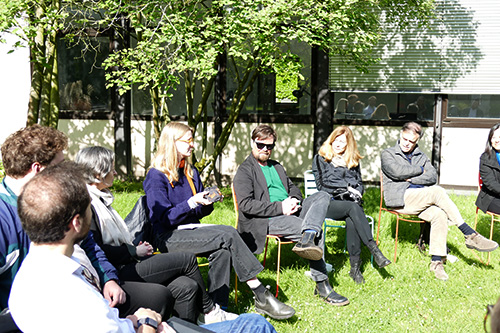

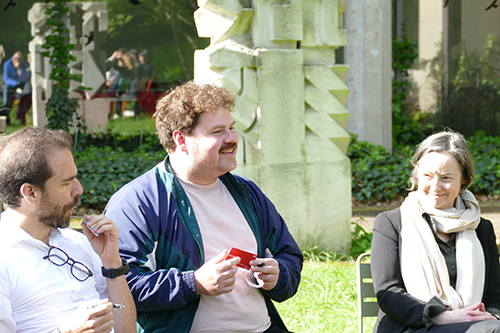
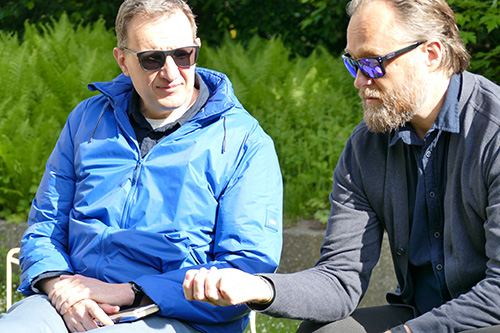
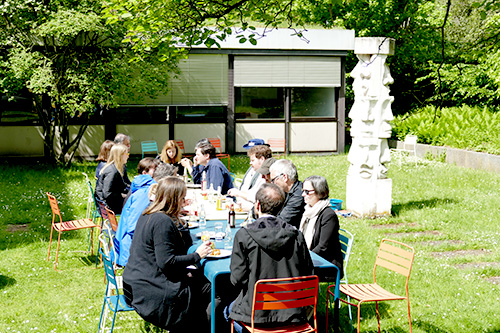
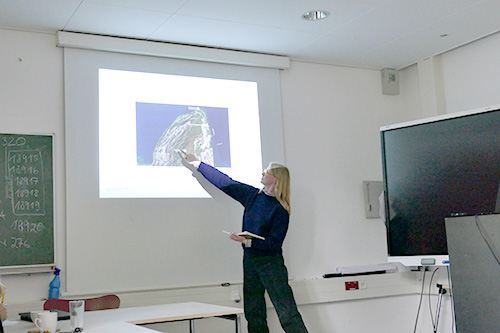
Day 2
Thursday started early and took the whole group to Misburg-Anderten, where they explored the subsequent landscapes and still active marl pits. The first stop was the southernmost marl pit, where a large area is used by Outdoor Hannover, an environmental education company. Exciting insights into human utilisation and biodiversity were gained and the challenges of a conservation status were discussed. In addition, the first two on-site theory lectures were held here by Ana Kucan (Relative Universalism and Correspondences) and Martin Prominski (Assemblage).
Day 2
Thursday started early and took the whole group to Misburg-Anderten, where they explored the subsequent landscapes and still active marl pits. The first stop was the southernmost marl pit, where a large area is used by Outdoor Hannover, an environmental education company. Exciting insights into human utilisation and biodiversity were gained and the challenges of a conservation status were discussed. In addition, the first two on-site theory lectures were held here by Ana Kucan (Relative Universalism and Correspondences) and Martin Prominski (Assemblage).
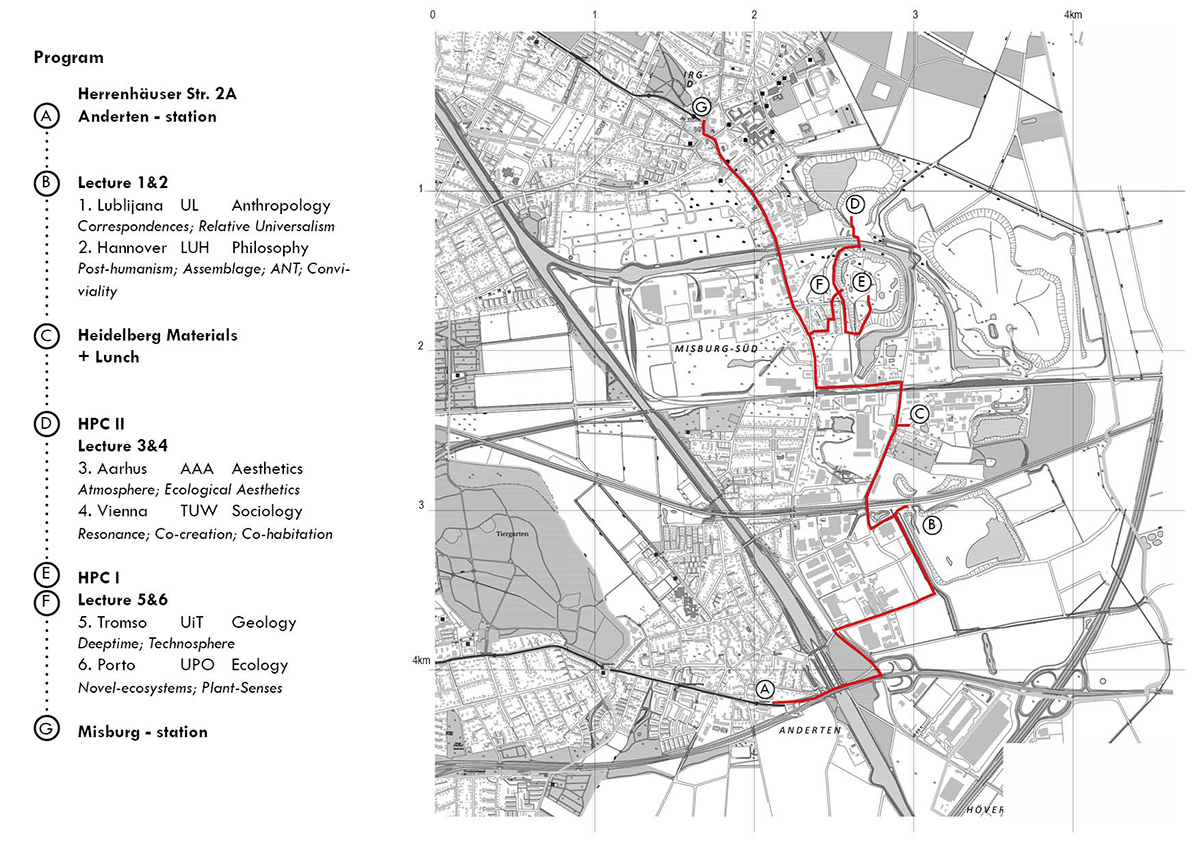

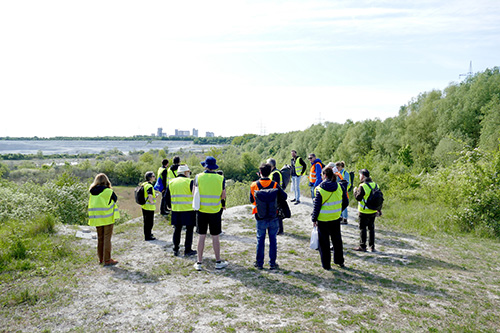
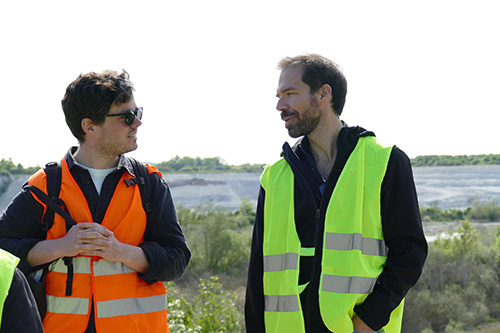

The Landlabs group then travelled to heidelberg materials, an active concrete plant. Here, the landscape in Misburg-Anderten could be viewed from a large silo tower. A guided tour by Bernd Michaelis (City of Hanover, Department of Environment and Urban Greenery) of the construction site of the planned near-natural recreation area with a bathing lake provided insights into how the city of Hanover is dealing with the subsequent landscapes.
The Landlabs group then travelled to heidelberg materials, an active concrete plant. Here, the landscape in Misburg-Anderten could be viewed from a large silo tower. A guided tour by Bernd Michaelis (City of Hanover, Department of Environment and Urban Greenery) of the construction site of the planned near-natural recreation area with a bathing lake provided insights into how the city of Hanover is dealing with the subsequent landscapes.

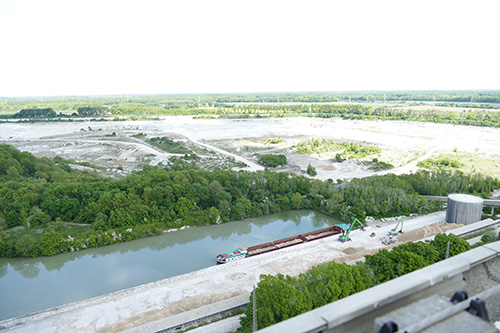

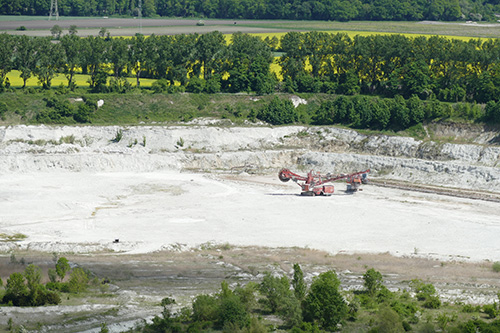
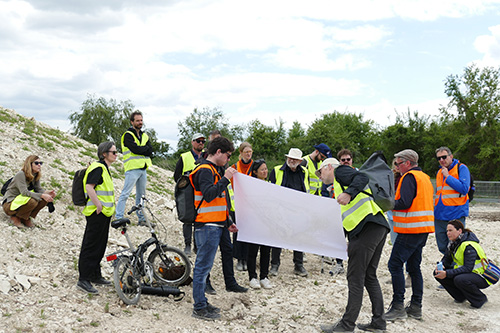

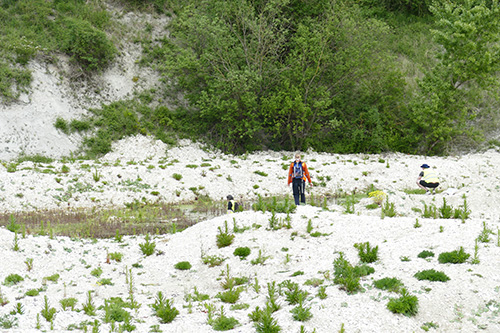
Finally, Stefan Rüter (City of Hanover, Department of Environment and Urban Greenery) gave a guided tour of the HPC1 nature reserve and opened discussions on the conservation of extreme measures to preserve endangered biotopes.
The excursion day ended with four further lectures on site by Niels Albertsen (Athmosphere and Ecological Aesthetics), Susann Ahn and Thomas Hauck (Resonance, Co-Creation and Co-Habitation), Thomas Juel Clemmensen and Eimear Tynan (Deep Time and Technosphere) and Paulo Marques (Novel-ecosystems).
Finally, Stefan Rüter (City of Hanover, Department of Environment and Urban Greenery) gave a guided tour of the HPC1 nature reserve and opened discussions on the conservation of extreme measures to preserve endangered biotopes.
The excursion day ended with four further lectures on site by Niels Albertsen (Athmosphere and Ecological Aesthetics), Susann Ahn and Thomas Hauck (Resonance, Co-Creation and Co-Habitation), Thomas Juel Clemmensen and Eimear Tynan (Deep Time and Technosphere) and Paulo Marques (Novel-ecosystems).
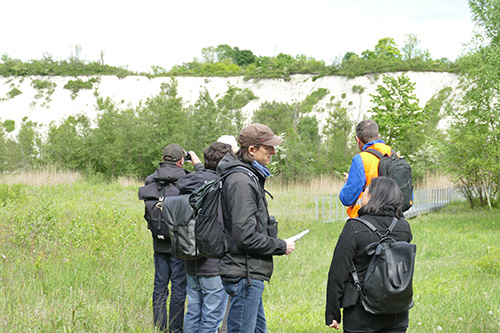
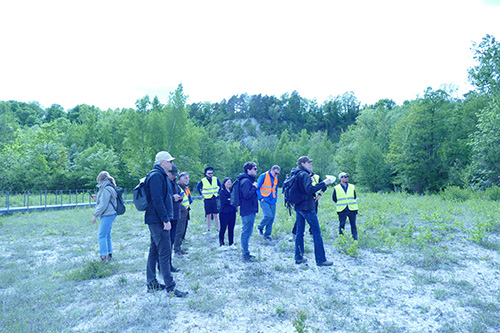
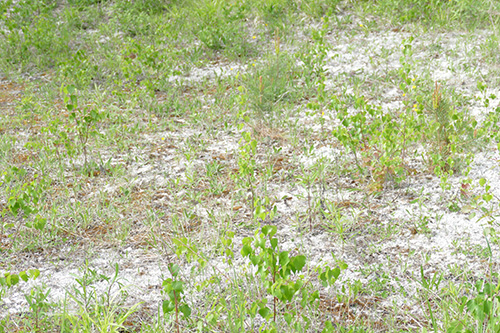
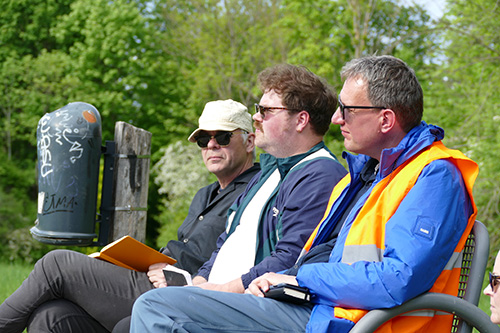

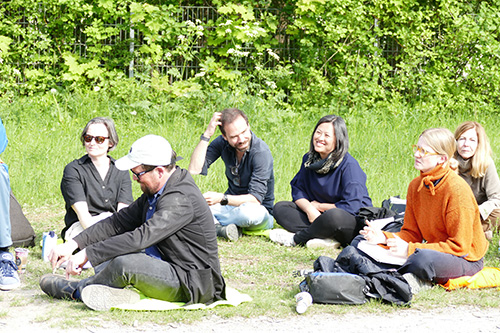
Day 3
The third day was characterised by presentations and discussions on Important European research Guidelines, the Landlabs strategy on dissemination, exploitation and communication and a workshop on the Career Development Plan.
Back to Events
Day 3
The third day was characterised by presentations and discussions on Important European research Guidelines, the Landlabs strategy on dissemination, exploitation and communication and a workshop on the Career Development Plan.
Back to Events

